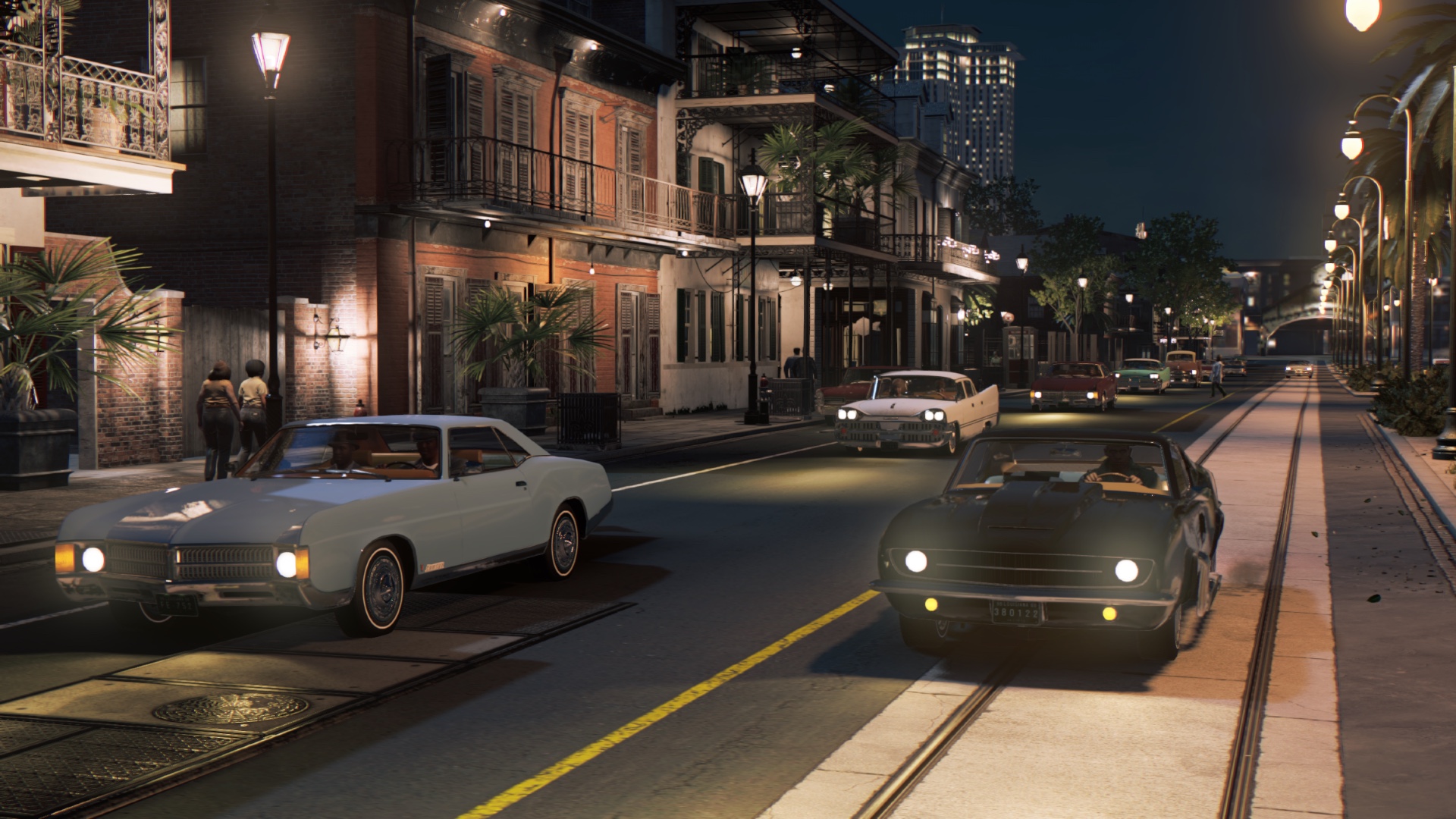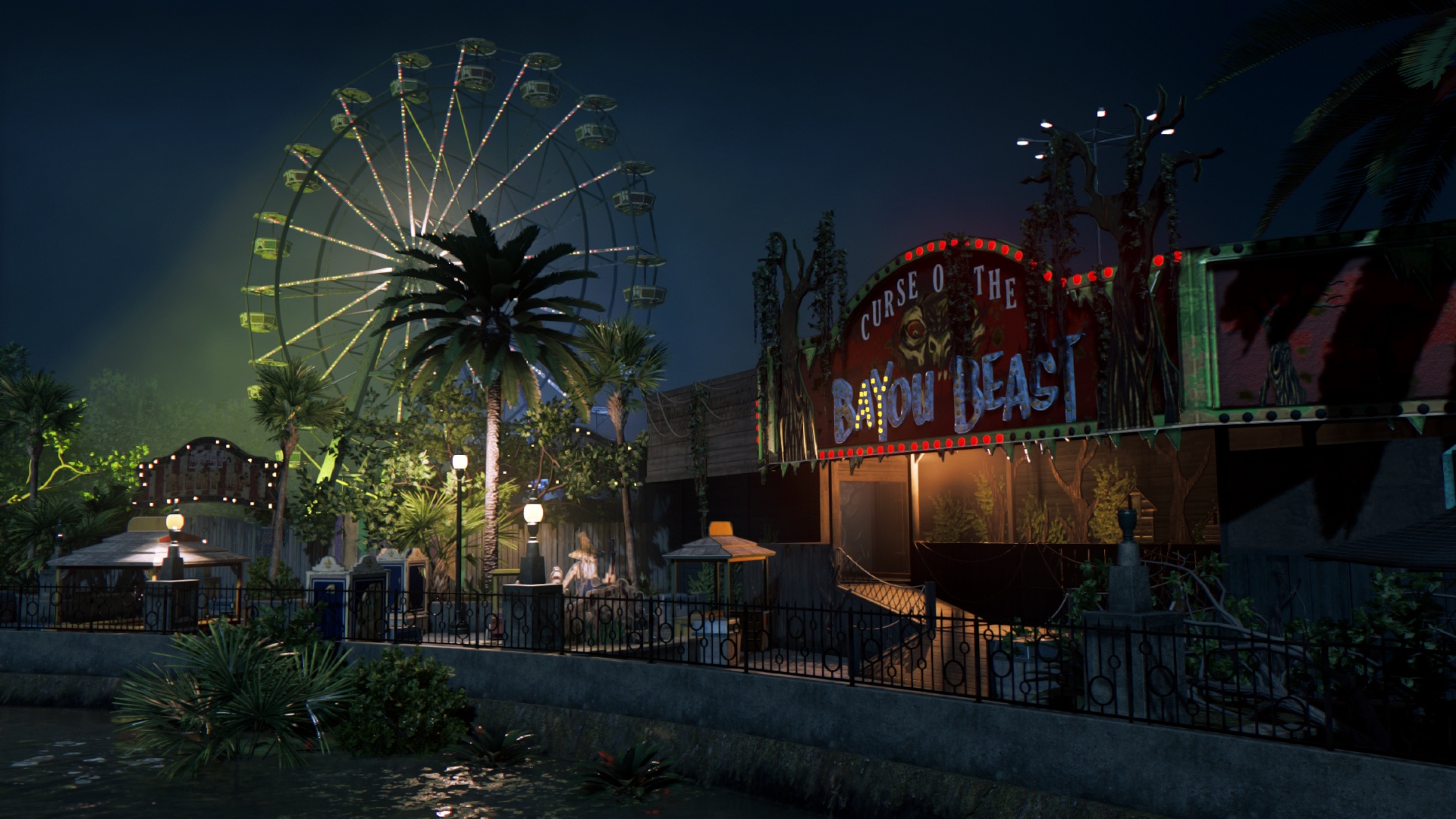It turns out Mafia III is the game I worried it might be, just not in the ways I expected. It’s hard to see at first, given how long it takes to unpack its slow pyramidal crime climb, or how well and powerfully told its mob-revenge story is. It’s also a remarkable feat of world building, as evocative of the jazzy, cypress-haunted Big Easy southern-opolis its pastiching as Grand Theft Auto maker Rockstar’s superlative collage of southern California. It has many charms, in other words. But as a game (for PC, Mac, PlayStation 4 and Xbox One), it’s mired in monotony, and more than a few play-futzing bugs.
A stirring cinematic opening that’s smartly delivered documentary-style from the vantage of people reflecting on what happened initially obscures this. The game supposes you’re fresh off a military tour of Vietnam circa 1968 and looking to reboot. But the C.I.A. tapped you for special ops work while overseas and now wants your help taking down a local mob boss who as the game’s getting rolling gives you some terrific reasons to oblige. You’re also partly Dominican, and therefore subject to the vulgar condescensions and epithets of a confused and frightened country in the throes of a civil rights reckoning.

Race isn’t a gameplay element so much as atmospheric poison that inflects every exchange—including the random chitchat picked up from passerby, and sometimes even the slurs that tumble tribally from your lips. It’s a tale told with the sort of ethical ambivalence and intelligence still rarely seen in games that lean this heavily on cinematics.
But then the hand of the storyteller lifts, and you have to lower yours to play the less able game. Think of all the turf war power fantasies that dangle resource ladders scalable by dominating shootouts or running odd errands. Mafia III is in that mold, only instead of climbing, you’re on a long, slow escalator ride to the top.
You start with nothing, the archetypal vendetta-obsessed underdog looking to knock the biggest blowhard off his throne. To get there, you have to move on rackets, pressuring informants and depleting illicit operations of income to force confrontations with racket honchos. Succeed and you gain control of new territory, placating sympathetic underbosses and increasing your income to buy better weapons and gear. You’ll also unlock special abilities that let you flex your new muscle, say buying off cops, calling in hit squads or cutting phone lines at crime scenes to thwart tattling witnesses.

While that stuff sounds interesting, most of winning comes down to over-easy firefights. These queue as missions in each district and play out in venues like warehouses, industrial yards or remote swampland compounds. At first I assumed these were simplistic for introductory purposes. But then the scenarios began to repeat themselves, asking that I fight the same skirmishes in the same places and in the same ways, only with a different bigwig hunkering in the backroom.
It’s a failing that’s exacerbated by bad guys dumb as fenceposts. They’re reliably lured (with a whistle) and coldcocked, too easily snuck up on and strangled, and prone to tramping out of cover like suicide junkies. This would be disappointing enough were we talking about circumscribed shooters like Rise of the Tomb Raider or Uncharted 4, but in an open-world that has you running these rote gauntlets over and over for dozens of hours, it’s maddening.
Let’s talk about what else is maddening. Mafia III is a game that assumes you delight in locomotion for locomotion’s sake. Some gamers like to ignore fast travel in games for realism’s sake, preferring to walk (or run) everywhere as an exercise in ambulatory authenticity. They’ll love Mafia III, because it does away with the temptation to “cheat” entirely. If you want to go somewhere, you have to go there, wheeling over a map that can take half a dozen minutes to cut across, accidents and hostile interruptions notwithstanding.

The game attempts to counterbalance by letting you summon valeted vehicles or mobile weapon stores, but they feel like half measures. It makes no sense, for instance, that you can ring up a consigliere to instantly deposit pocket cash, but can’t deploy one to canvas the map and collect your operatives’ income. Instead, you have to personally motor to each district, get out of your vehicle, and enter whatever building just to grab a few thousand bucks off someone’s table.
The side missions extend the footslog as you toil to pry up more bits of precious story. Steal a truck, then bring it somewhere. Steal a boat then bring that somewhere. Boost a car for a friend, then boost some more. Each of these diversions plays the same: Sneak into an area, hijack the vehicle before anyone’s the wiser, then drive unmolested to a delivery spot. There’s no intermediary challenge and nothing that threatens the journey, just busywork for scraps of cash—the dreaded delivery boy trope unvarnished.
What’s left barely moves the needle. Picking locks or wiretapping nodes, which involve the same timed button presses, becomes so routine you wonder why they’re in the game at all. And collectibles add the sort of legwork you’re either into or not in these games, luring you on map hunts for period-specific media, including in this case partly viewable issues of Playboy and Hot Rod, the odd 1960s LP jacket, and a bunch of Alberto Vargas pinups that—unlike the Playboys, which at least resurrect important tone-setting interviews—seem merely there to titillate.

That’s before we’ve said a word about the game’s technical quirks. I’ve seen cars embed themselves in the ground like teleportation experiments gone awry, or others that hover like visitors from Back to the Future II. I’ve had missions direct me to heist nonexistent boats, cluttering the map with useless icons. I’ve seen spasmodic bouts of unearthly lighting, shadows from clouds that suddenly speed across the terrain swift as jets, flickering textures and rooms that inexplicably fog over in inky blackness. And I’ve wrestled with a bizarre sound bug where if you shift the view perpendicular to whoever’s speaking, the audio cuts out.
All of which sounds like I’m advising you pass. Not unequivocally. If Hangar 13 fixes Mafia III‘s bugs, and I assume they will, even with all the baked-in shortcomings no patch is going to fix, there’s something indelible about the city of New Bordeaux. Whether it’s listening to the unexpectedly poignant radio soliloquies of an apoplectic DJ, admiring the tracery on a creole townhouse, or taking in the nighttime cliffside views of distant sodium lights dotting the lower wards, this a playground that rewards dawdling. It’s one of these rare half-broken, half-brilliant things where the world-building and storytelling are so vivid, that it may be worth overriding conventional expectations just to have the rest of the experience.
2.5 out of 5
Reviewed on PlayStation 4
More Must-Reads from TIME
- Donald Trump Is TIME's 2024 Person of the Year
- Why We Chose Trump as Person of the Year
- Is Intermittent Fasting Good or Bad for You?
- The 100 Must-Read Books of 2024
- The 20 Best Christmas TV Episodes
- Column: If Optimism Feels Ridiculous Now, Try Hope
- The Future of Climate Action Is Trade Policy
- Merle Bombardieri Is Helping People Make the Baby Decision
Write to Matt Peckham at matt.peckham@time.com